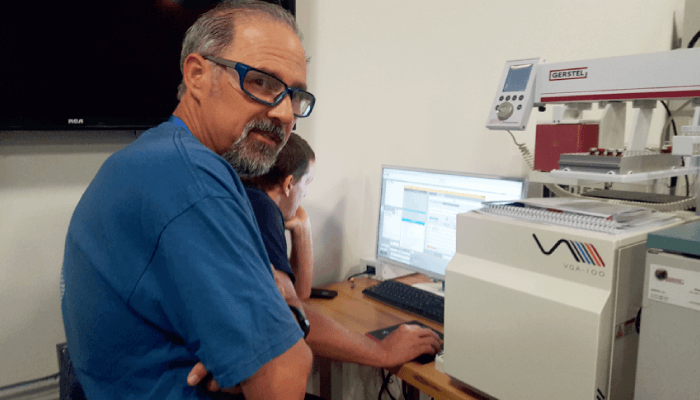
What’s your background – and what are your current interests?
I “grew up” in the US Environmental Protection Agency’s Robert S. Kerr Environmental Research Laboratory (RSKERL). And that’s where I got my introduction to gas chromatography (GC) in the early 1980s – just as fused silica capillary columns came around. I’ve loved capillary GC ever since, and used it throughout my career at various government and industrial jobs, including at LECO Corporation, where I helped introduce a commercial high-speed time-of-flight mass spectrometer (TOFMS) to the comprehensive two-dimensional GC (GC×GC) community.
My research interests included GC inlets, GC×GC, mass spectrometry (especially TOFMS), analysis of environmental pollutants (for example, PCBs, chlorinated dioxins and furans, PAHs, pesticides), analysis of cannabis, and sample preparation techniques (including QuECHERS).
I’m now retired from the analytical chemistry field, so my current interests include wildlife and nature photography, and bird, butterfly, and moth identification. I also actively participate in “citizen science” efforts through the wonderful iNaturalist platform.
Can you share a few details about your Scientific Achievement Award from GC×GC
I received the 2021 GC×GC Scientific Achievement Award with my almost career-long collaborator, Frank Dorman, which made that honor even more special for me. I think I was recognized more for the body of work I contributed to GC×GC rather than a particular piece. If I had to narrow it down though, I’d hope that it was my efforts to educate users on how to get the most out of their GC×GC-TOFMS system. And I’m very proud of the fact that those efforts originated from my own hands-on laboratory work, practiced throughout my career. Along the same lines, I was a founding member of the Multidimensional Chromatography Workshop, along with Eric Reiner, Don Patterson Jr., Jef Focant, and Frank Dorman.
And do you have any “top tips” for getting the most out of a given instrument or technique?
That’s a tough question, given that GC and GC-MS instruments are being marketed more and more as “analyzers” for targeted compound work. But if you are using GC or GC×GC for discovery work, where the “canned application” isn’t appropriate, find the analyst who’s been in the lab for years and politely ask for some advice! Next, use that knowledge as a starting place, improving things if you can. I think it was Koni Grob who wrote an HRC editorial many years ago about the fact that chromatographers weren’t being given any time to “play around,” but I found that to be essential for optimizing an analytical method.
What was the biggest advance in GC×GC during your career?
In my opinion, the single biggest advance for GC×GC was the commercial introduction of a fast-acquiring TOFMS. Because GC×GC generates peaks that can be 50-100ms wide, it was originally used almost solely with a flame ionization detector. But people want to know: What are all those peaks?! I’ll take it one step further and say the biggest advance was the commercial introduction of the whole GC×GC-TOFMS platform – the GC, a good thermal modulator, secondary oven, fast acquiring TOFMS, and the data processing and visualization software. For an applications scientist like me, that all-inclusive package allowed me to build methods versus building instruments.
What is your view on the value of physical meetings for the field?
A timely question, as I’m on the Board of Directors for the North American Chemical Residue Workshop and we decided our meeting for July 2022 will be virtual. I also saw that the 19th International GC×GC Symposium for May 2022 is going virtual. The value of physical meetings for these two particular meetings is high for me, as I think of many of the attending scientific colleagues as family. Aside from that personal comment though, virtual meetings just don’t permit/encourage the spirited one-on-one scientific discussions that occur over a coffee or dinner at physical meetings. Some of my best collaborations started that way. That said, virtual attendees can still get valuable information from lecturers, often at their convenience via recorded presentations. Moreover, virtual meetings have the potential to bring higher attendance given that travel costs are eliminated.




